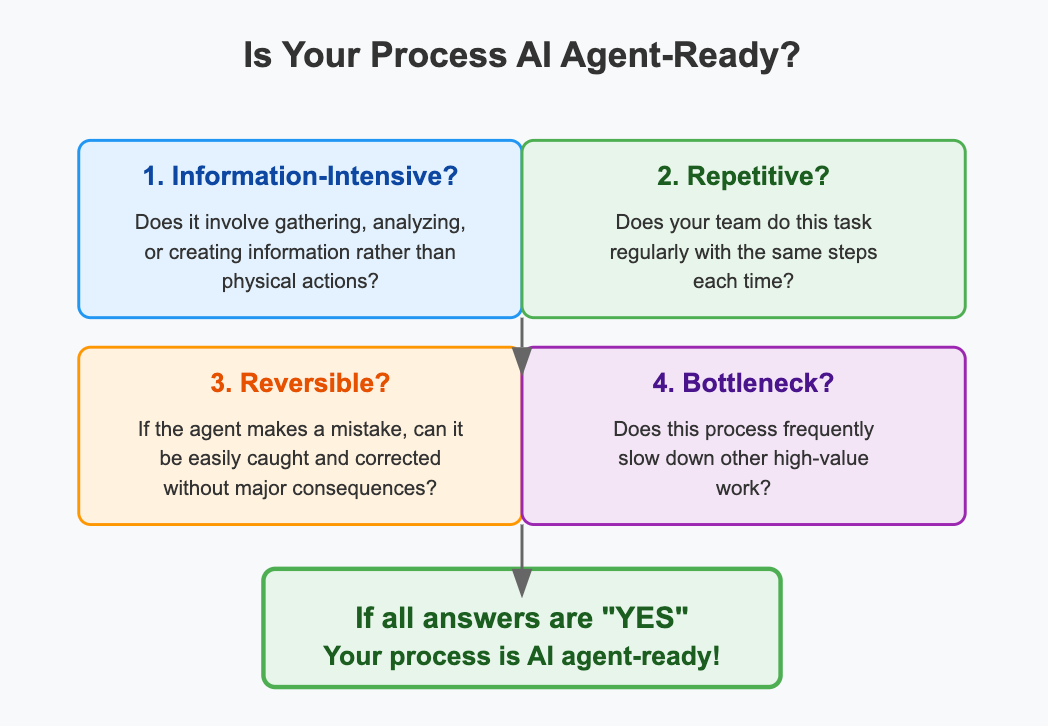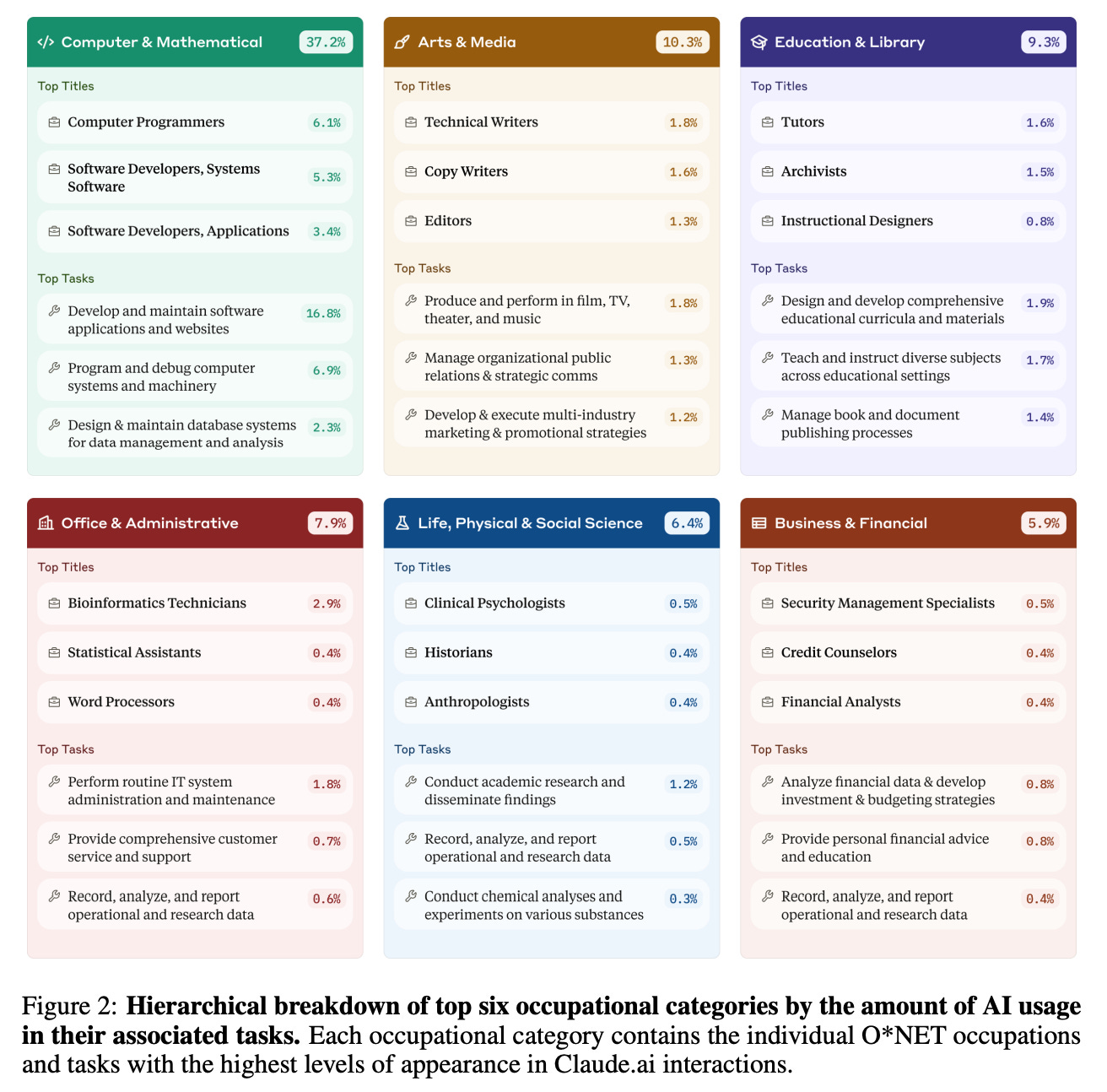The Great Rewiring (Part III)- How to Onboard AI Agents
Part 3 of 3: A Practical Framework for Your First AI Agents
In Parts I and II, we explored how businesses need to reimagine their processes around AI agents (rather than simply adding AI to existing workflows) and examined the four technological breakthroughs making this possible today. Now, let's get practical with a simple framework to identify your first agent opportunities and the tools to implement them.
Where Should AI Agents Get Started
Jeff Bezos offers a useful starting point. He famously distinguished between two types of decisions in organizations:
Type 1 decisions: Irreversible and high-stakes - require careful consideration
Type 2 decisions: Reversible choices where speed matters more than perfection
AI agents are ideal for handling Type 2 decisions — those reversible choices where “perfect” isn't required but speed and consistency matter. By offloading these decisions to agents, your human teams can focus on the truly consequential Type 1 decisions that require human judgment.
Four Questions to Identify Agent-Ready Processes
To identify your first opportunities, ask these four questions about each process:
Is it information-intensive? Does the process involve gathering, analyzing, or creating information rather than physical actions?
Is it repetitive? Does your team do this task regularly with the same steps each time?
Is it reversible? If the agent makes a mistake, can it be easily caught and corrected without major consequences?
Does it create a bottleneck? Does this process frequently slow down other high-value work?
If you answered "yes" to all four questions, you've found an ideal candidate for your first agent workflow.
Four Starting Points
For your first agent implementations, focus on processes with fewer steps, well-defined, and where success is clear and errors are easy to spot. Here are four areas where businesses are finding immediate success:
Research: Gathering information from multiple sources, comparing findings, and creating summaries for human review
First-draft content creation: Generating initial versions of standard communications that can be refined and personalized by your team
Data analysis and visualization: Transforming raw data into actionable insights through pattern identification and reports for your analyst team
Customer service assistance: Categorizing and prioritizing incoming customer requests, generating appropriate response templates, and routing inquiries to the right team members
The starting points above aren't theoretical suggestions. They're backed by usage patterns across industries. Anthropic's recent research analyzing millions of Claude conversations reveals that businesses are finding immediate value in software development, content creation, research, data analysis, and customer service.
Tools to Get Started with AI Agents
Now that you know where to focus, let's look at the specific tools that can help you implement these agent workflows. I've organized them by complexity:
For Business Users (Beginner-Friendly):
ChatGPT & Claude Pro: Start with personal AI assistants to understand capabilities
Model Context Protocol (MCP): Enhance Claude's connectivity by linking it to your computer, browser, Gmail, Office apps, Slack, and more.
Gumloop or Mindstudio: No-Code visual workflow builders that let you create AI agents and full workflows easily
Tools I Am Playing With:
Cursor (My New Favourite Tool): An AI-powered code editor for faster development—ideal for transitioning from no-code tools to coding environments.
API Access: Direct access to foundation models
Anthropic API or OpenAI API for tailored AI development.
FAL Marketplace for integrating multi-modal models (e.g., text-to-audio/video conversion) into your agents
Composio: Platform that connects AI agents to 250+ applications (e.g., Salesforce, HubSpot, Gmail, GitHub) with minimal coding effort
Microsoft AutoGen: Framework for specialized multi-agent orchestration development
A Word of Caution
While our four-question framework helps identify promising opportunities, it's important to understand where AI agents currently struggle. Tasks requiring many sequential steps or complex planning remain challenging, as errors can compound and be difficult to trace. We are also missing key infrastructure - proper developer tools, security standards, and ways to understand why agents make certain decisions.
Your Next Move
Start with a focused use case that passes all four of our screening questions. Begin with smaller, well-defined processes where success is clear and errors are easily identified. Measure results, learn quickly, and gradually scale what works.
Remember, the goal isn't to build perfect systems immediately. The businesses that gain competitive advantage won't necessarily be those with the most advanced AI, but those who integrate it most effectively into their operations.
Those are my Thoughts From the DataFront
Max
Agent News Roundup
To help you stay current with this rapidly evolving space, here are some recent developments worth noting:
Salesforce launched AgentExchange, the first-ever marketplace for AI agents. The platform lets companies easily find pre-built agents or design their own with templates, complete with user reviews to help identify the best solutions. Salesforce predicts agents will add $6 trillion to the global economy by 2030, and initiatives like this will help accelerate adoption.
Convergence, the UK-based startup taking on OpenAI’s Operator, just released a new Template Hub filled with dozens of pre-made AI agents for you to try. Options include a daily news digest, a stock tracker, a B2B competitive analysis tool, and even a build-your-own option. You can browse the hub here, but keep in mind, you’ll need to sign in first.
MCP Ecosystem Expanding: Adam Silverman compiles everything you need to know about Anthropic’s Model Context Protocol (MCP) announcements/launches from Composio, Firecrawl, Cursor, Jira, Langchain, Firebase, and more — and why it could transform the field of AI





